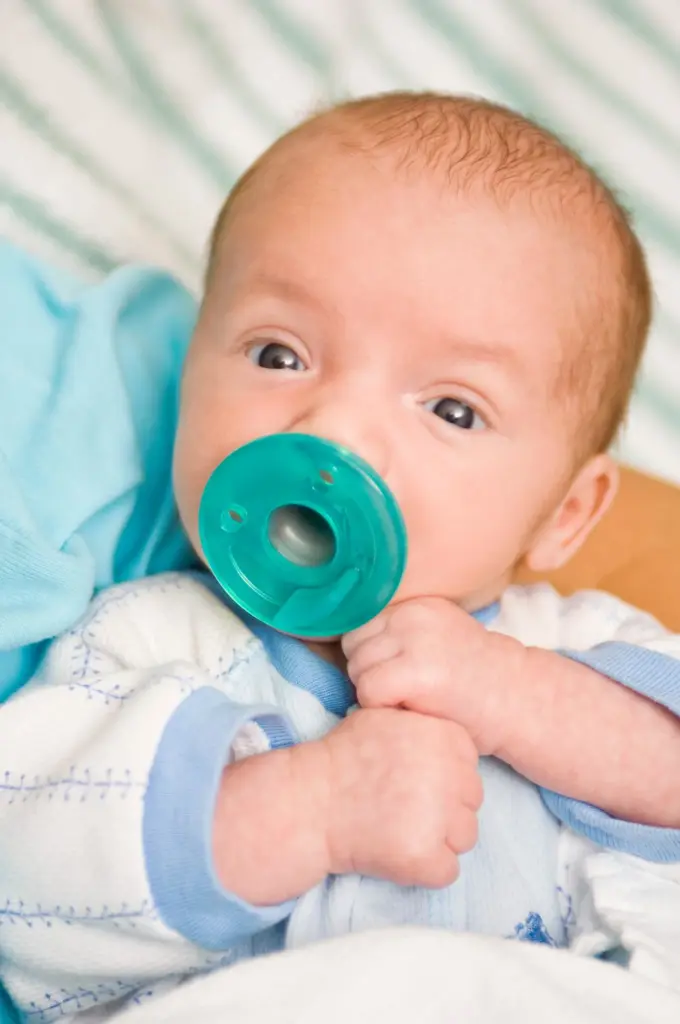
Choosing the right pacifier for your baby can feel overwhelming, especially with varying recommendations from professionals. Should you choose an orthodontic pacifier or a cylindrical-shaped one? Let’s break down what each expert group advises and why, as well as the benefits and potential drawbacks of each option.
Orthodontic Pacifiers: Shaping the Palate
Orthodontic pacifiers are often recommended by pediatric dentists because their flattened, bulbous shape is designed to better align with the baby’s hard palate and jaw. The goal? To guide the palate into a wider, more U-shaped form during key periods of growth—especially after 12 months of age. Since the roof of the mouth is the floor of the nose, promoting a broad palate may support overall airway health too.
But here’s the part that often gets missed: function matters just as much as form.
While the flat design may work with the palate shape, it can work against proper tongue posture and oral function. Instead of encouraging the tongue to cup and elevate around the pacifier—like it would with a more rounded, nipple-shaped design—the flattened orthodontic shape often leads to a low tongue posture, open mouth breathing, and a “chompy” or thrust-based suck pattern. This can discourage the kind of oral motor patterns we want to see for feeding, breathing, and speech development.
The truth? Kids’ mouths are like Silly Putty. They mold and change in response to pressure and function. So while orthodontic pacifiers are designed with structural support in mind, prolonged use of any pacifier—regardless of shape—can influence the growth and shape of the mouth.
That’s why most pediatric dentists recommend:
✔ Using pacifiers only when necessary (like for sleep)
✔ Avoiding prolonged or passive sucking beyond 12 months, and
✔ Watching for signs of mouth breathing or open mouth posture.
In short: the pacifier shape matters, but how the tongue interacts with it matters even more.

Cylindrical Pacifiers: Supporting Oral Motor Skills
The timeline for pacifier weaning varies depending on the recommendations you follow. The American Academy of Pediatrics (AAP) suggests weaning from pacifiers by 2 years of age to minimize the risk of dental issues. However, feeding therapists often advocate for an earlier weaning process, recommending that parents start weaning by 6 months and aim to eliminate pacifier use entirely by 12 months.
Feeding therapists also encourage transitioning to teethers as an alternative once pacifier use is phased out. Teethers provide oral stimulation and help with soothing while avoiding the potential oral development concerns associated with prolonged pacifier use. They also get baby ready for starting solids!
Why do these timelines differ? Pediatric dentists are primarily concerned with minimizing oral habits that could affect the shape of the palate and teeth after 12 months. In contrast, feeding therapists prioritize the development of oral motor skills within the first year of life, focusing on how pacifiers impact feeding, oral motor skills and eventually speech development.
Despite these differences, both groups agree that prolonged pacifier use can lead to complications, including dental misalignments and delays in oral motor development.
What’s the Best Choice for Your Baby?
When deciding between an orthodontic or cylindrical pacifier, consider your baby’s age and developmental needs:
✔ For infants under 6 months: Cylindrical-shaped pacifiers are ideal for supporting oral motor skills and proper tongue movement, which are important for feeding development.
✔ For older infants (6-12 months): Begin the weaning process, soothe and remove, and get the tongue to rest up on the roof of the mouth. See how here.
✔ By 12 months: It’s recommended to eliminate pacifier use entirely. This helps prevent potential dental issues and supports healthy oral development. Transitioning to teethers can be a helpful alternative during this time.
Potential Drawbacks of Prolonged Pacifier Use
Regardless of pacifier type, prolonged use can have unintended consequences, including:
✔ Dental issues such as open bites, crossbites, or misaligned teeth.
✔ Delays in speech development due to excessive reliance on pacifiers for soothing.
✔ Disruption of normal oral motor patterns, which may affect feeding and swallowing behaviors.
✔ Promotes low tongue posture, open mouth posture, mouth breathing, tongue thrust swallow and can impact speech sounds. If the tongue is low in the mouth, it can start working low in the mouth. This may look (or sound like a lisp).

Key Takeaways
Choosing between orthodontic and cylindrical pacifiers depends on your baby’s age and developmental stage. Cylindrical pacifiers are beneficial for infants learning to feed, as they promote proper sucking skills and tongue movement. Dentist may recommend an orthodontic pacifier because they are thinking about the hard palate shape after 12 months! However, if we start thinking about weaning the pacifier around 6 months, promote oral rest posture, and fully eliminate before 12 months, all providers are on the same page! Both supporting breastfeeding and bottle feeding skills and protecting the shape of the hard palate.
When in doubt, consult with your pediatric dentist and feeding therapist to determine the best approach for your child. Remember, every baby is unique, and their needs may vary. By understanding the role of each pacifier type and following expert guidelines for weaning, you can support your baby’s oral health and overall development.

